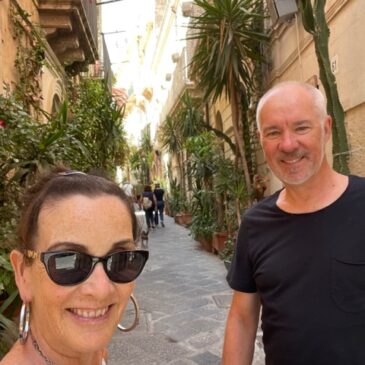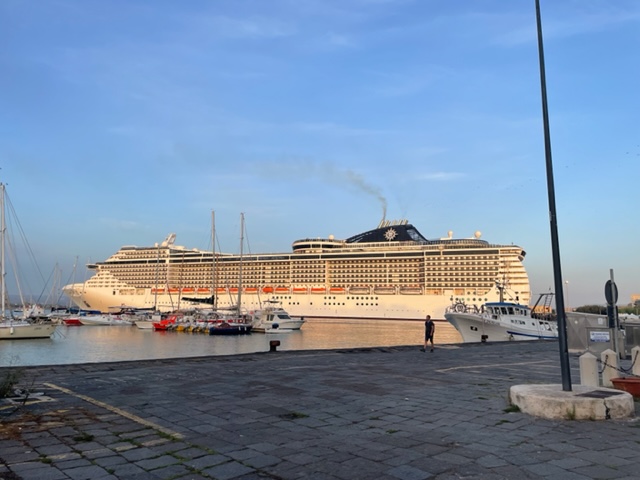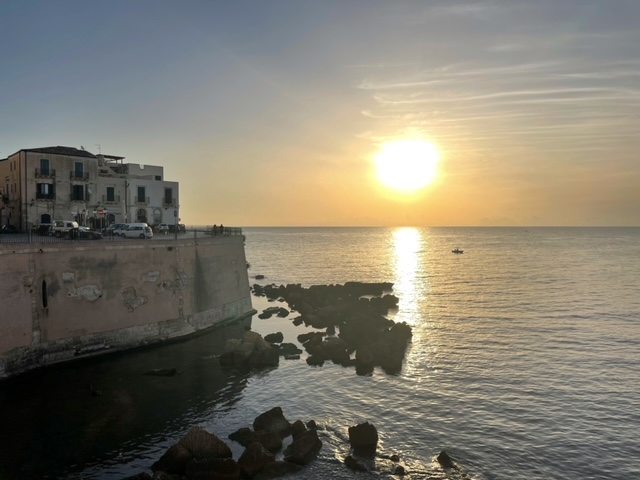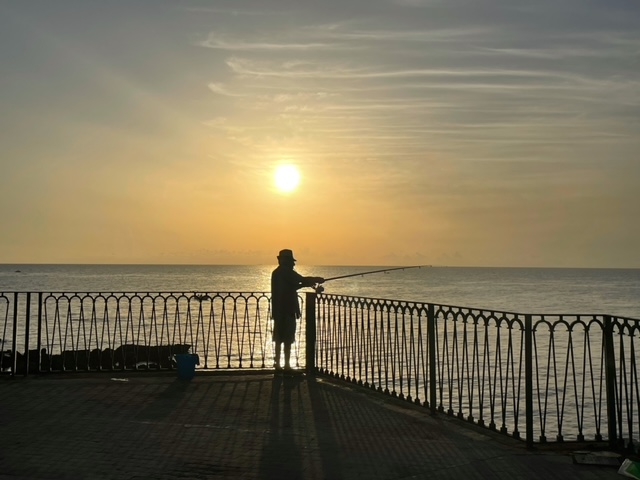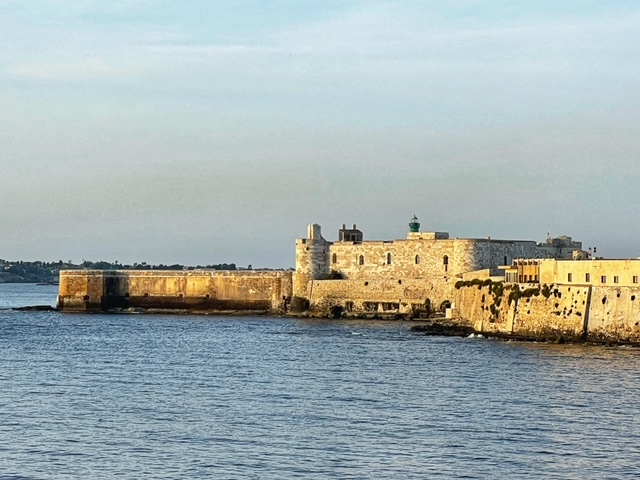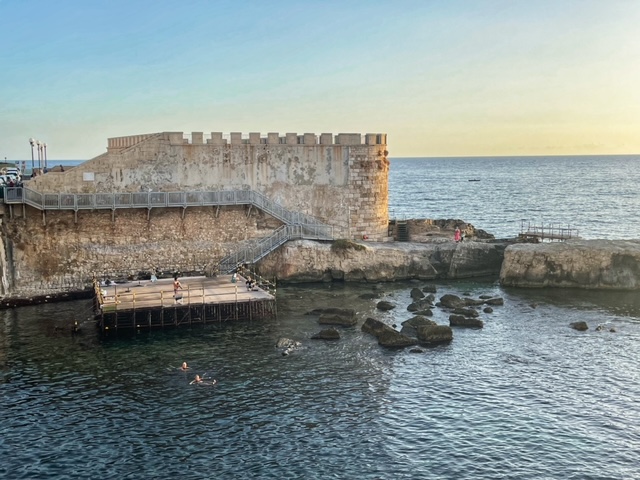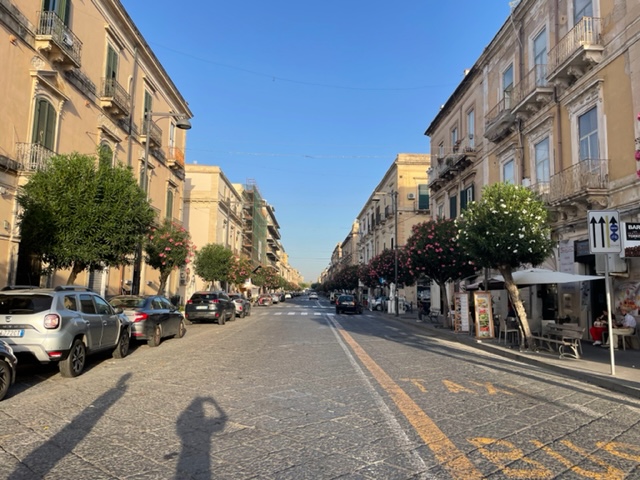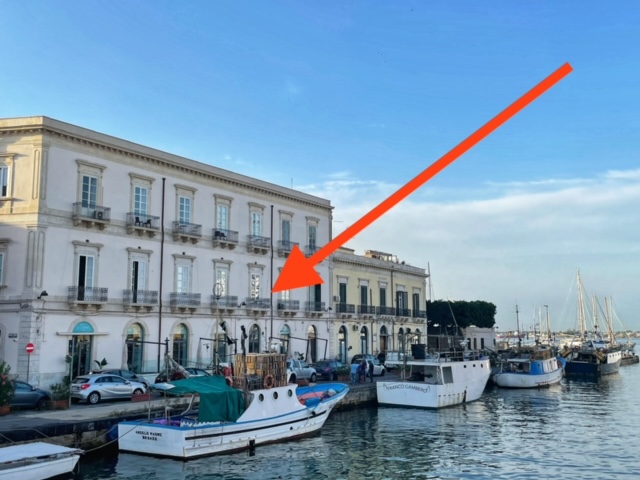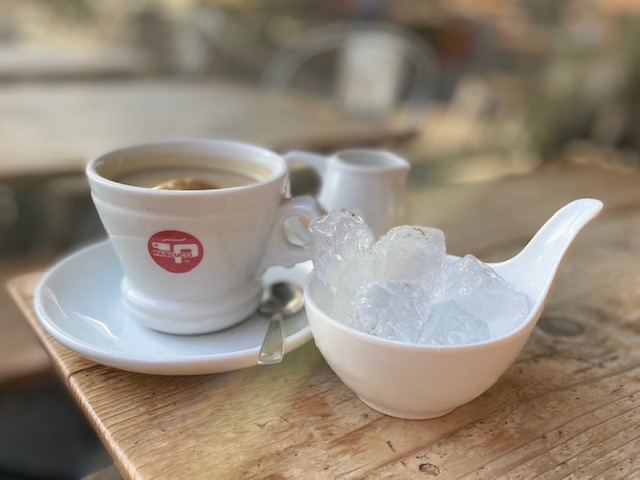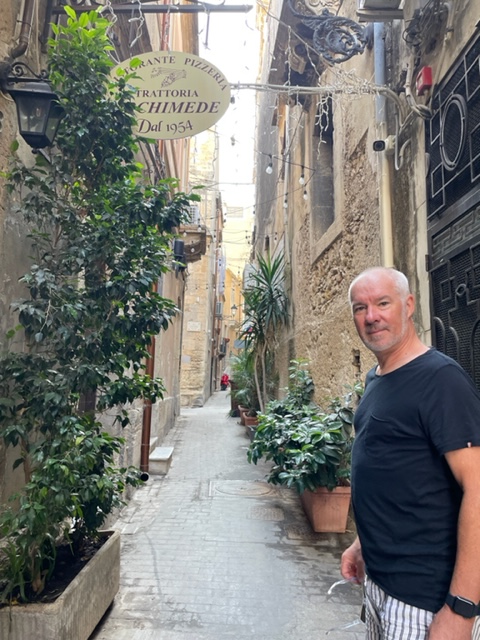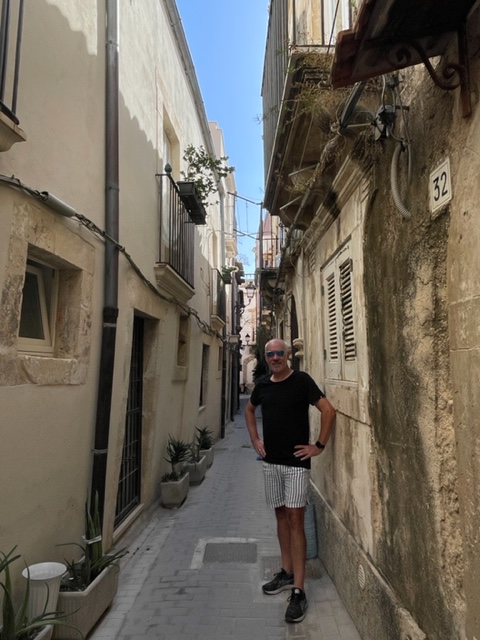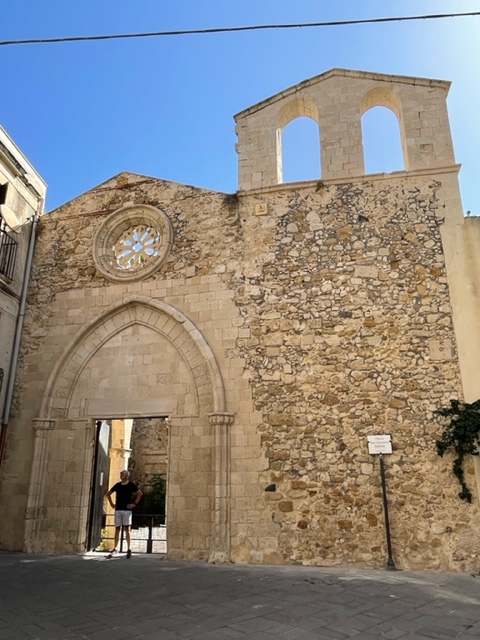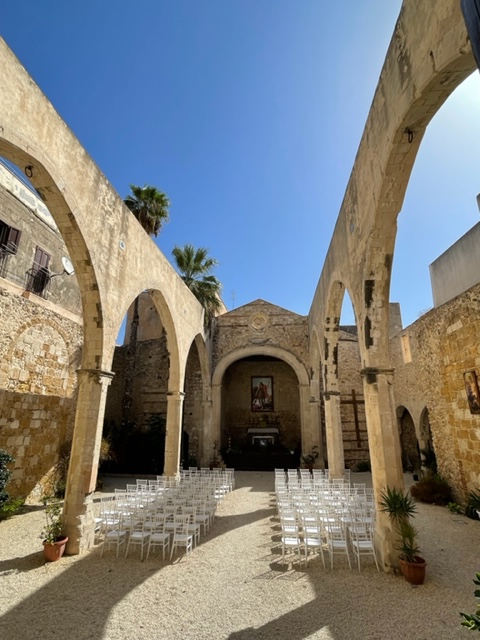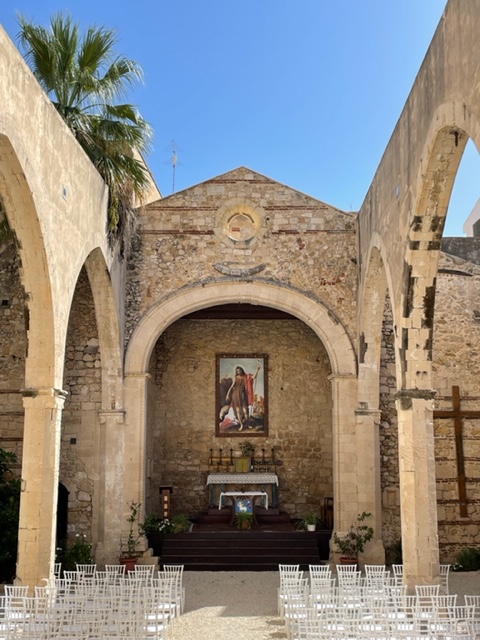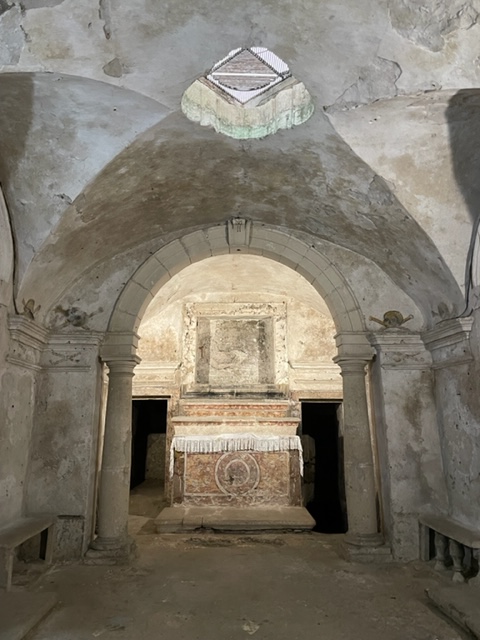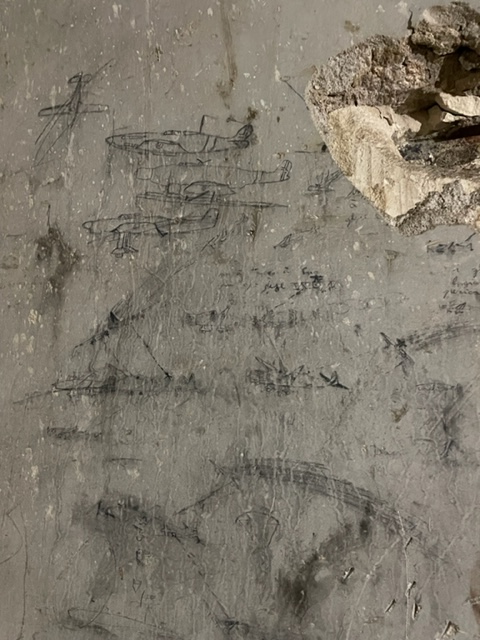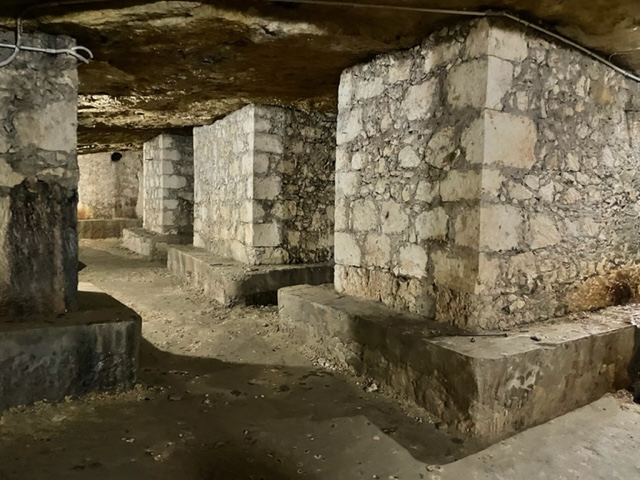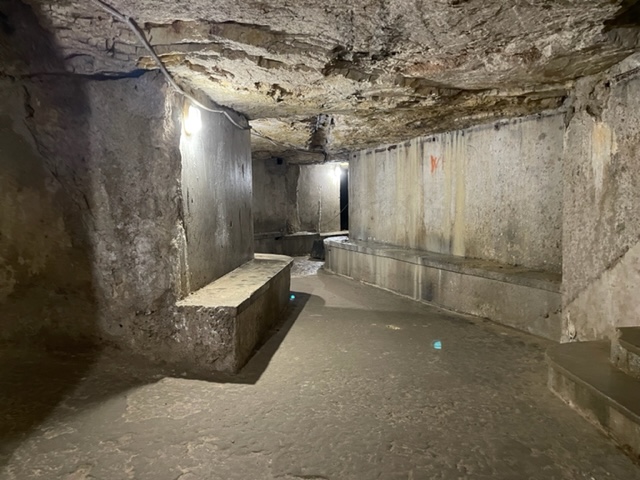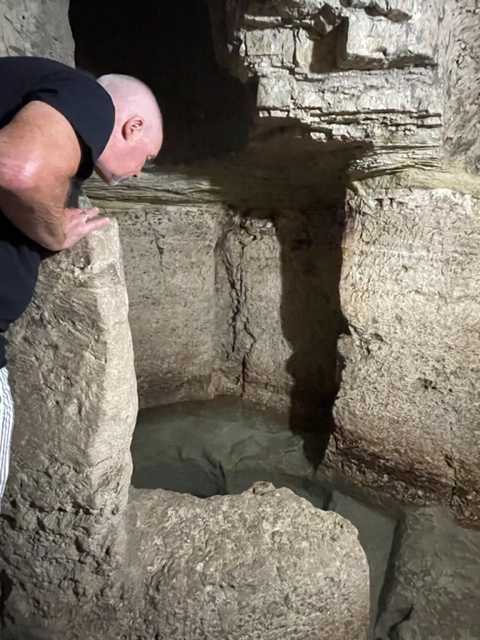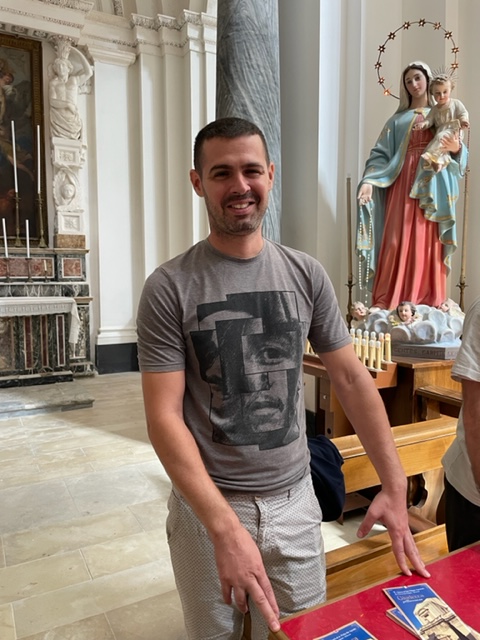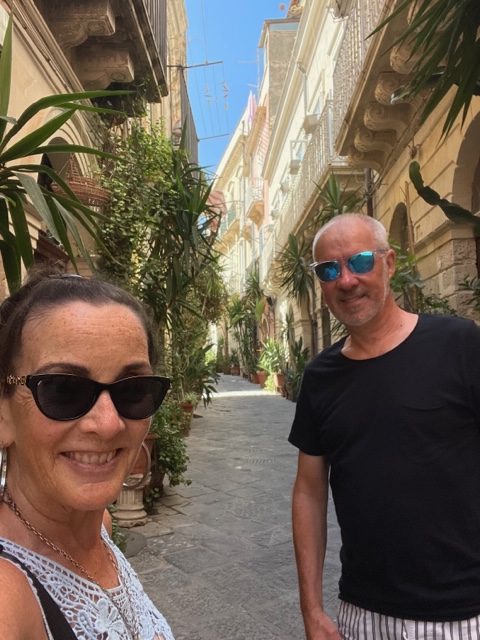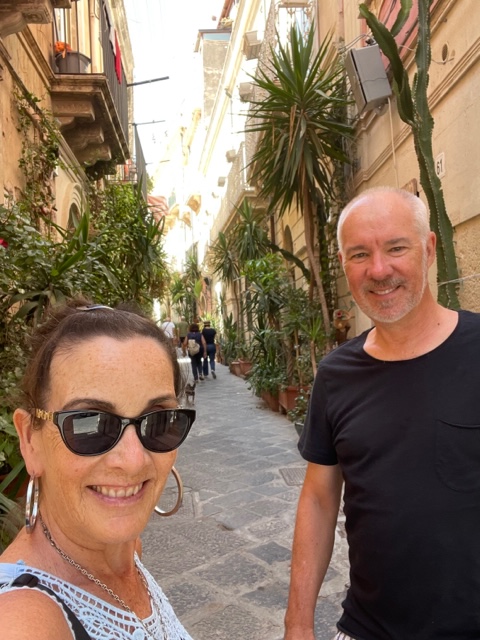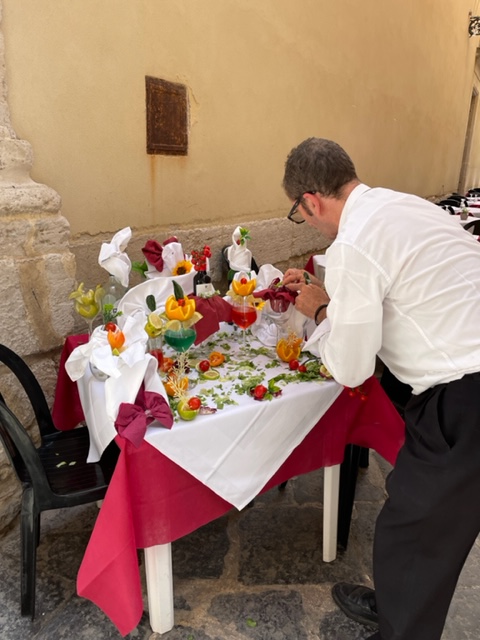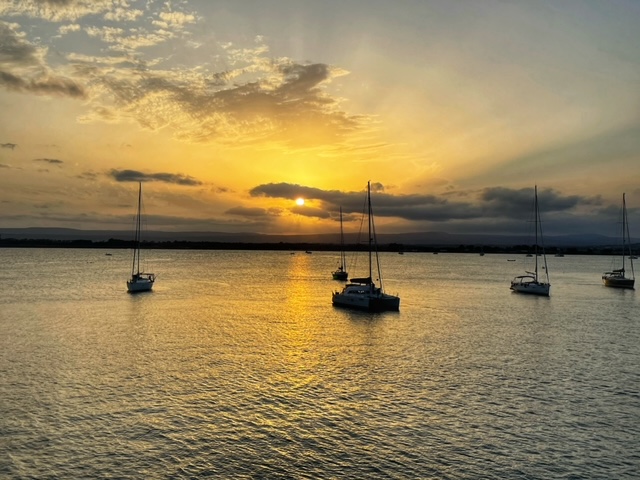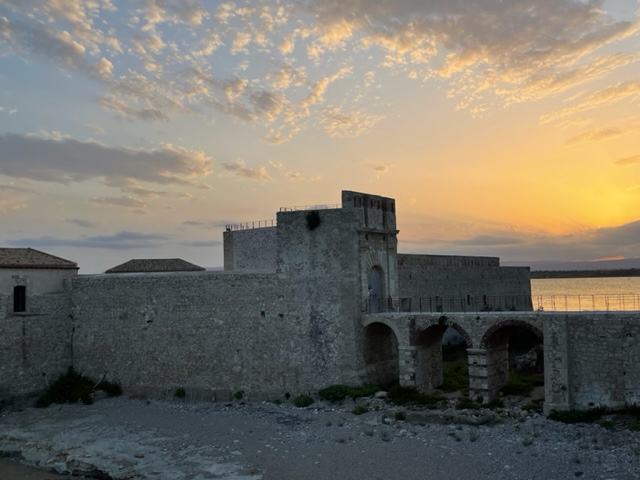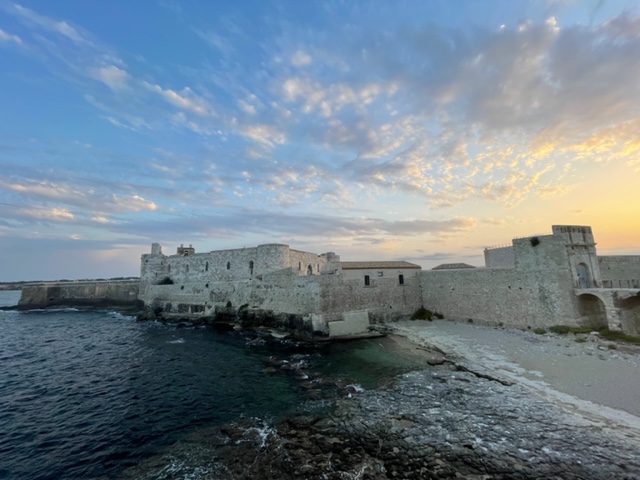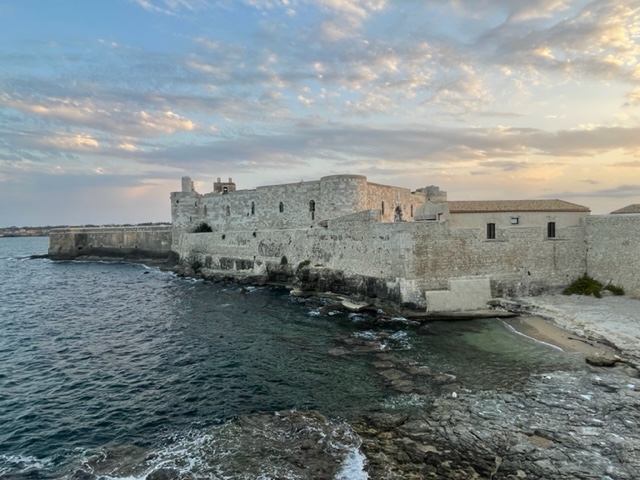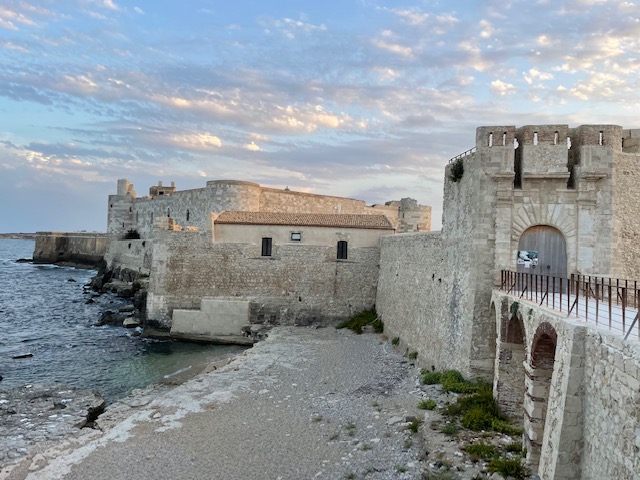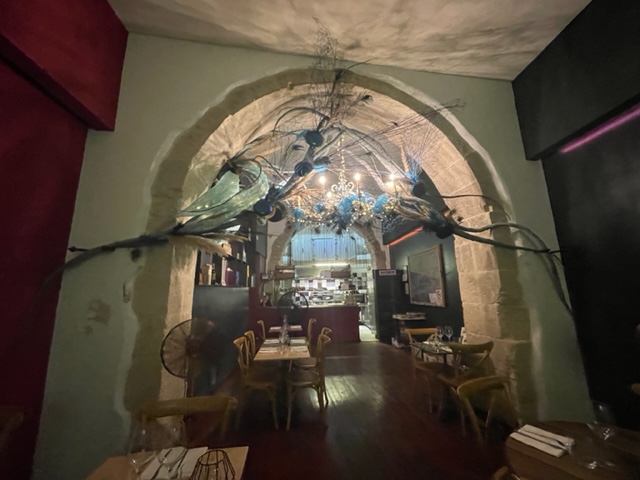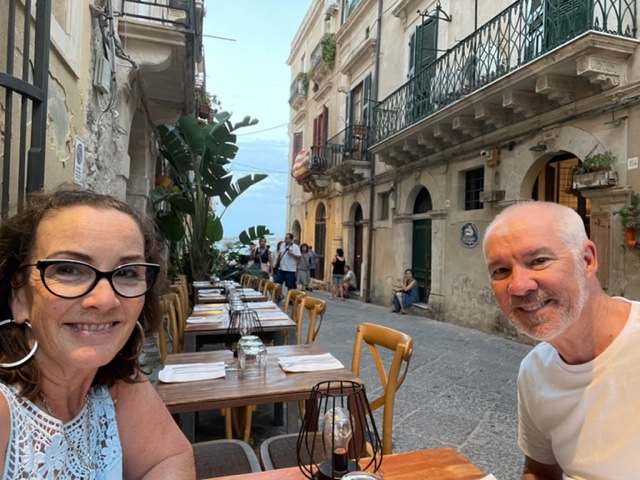Ortigia: Sat Sept 17 – Wed Sept 21
Accommodation link.
Tuesday 20th September
It was another beautiful morning so we went for a walk doing a lap of the island and headed back to the same cafe at the Ortigia Street markets we visited the day before. It was our last day in Ortigia and we didn’t have a whole lot planned. We allocated the morning to head over to the Jewish Quarter to investigate the streets and to check out the Jewish baths. There are no Jewish people currently living in Ortigia and, apparently, there are only 18 that live in the whole of Sicily. There had been 3,000 Jews living in Sicily at one point but they were all expelled in 1492 as part of the Spanish Inquisition. So the Jewish Quarter now refers to a small area of the island, just a few streets in fact, where the Jewish population had once lived.
The first bath we visited was Bagni Ebraici and the story of these baths is quite amazing. The baths were actually discovered by accident in 1998 by a lady who was renovating a house. After doing some excavations her builders kept digging and found a bath system that is now considered to be the biggest and oldest Jewish bath in Europe; the excavation of the area dates back to the sixth century BC. You can read more about this discovery using this link. The bath system is thought to have been linked to what was a nearby Synagogue at the time but is now the Church of San Giovanni Battista. The bath system is relatively small and at the bottom of 55 steps. Entry was 5 Euros and included a short 10 minute commentary from a rather bored and disinterested guide.
The second bath we visited was actually part of a much larger system below the Church of St Philip the Apostle. Our guide here, Marco, was much more invested in informing our small group about the history here and he reminded us very much of our Bondi neighbor, Jamie, not just in looks but in mannerisms and sense of humor too! For those of you who know Jamie you can check the photo below. The tunnel system below this Church was initially carved out by the Greeks as they quarried limestone for building material. During the Roman period the space was used as a cistern, during the period when the Church was used as a Synagogue the space was used as a Jewish bath and during World War II the space was used as an underground bunker. The fascinating thing about the series of tunnels below this church is that they extend across 30% of all Ortigia and linked up to many different churches across the island. There was no entry fee as such for this visit but they did ask for a donation at the end. Both sets of Jewish baths were interesting but this one, below the Church, was the most impressive.
We went on to explore a little bit further through the Jewish quarter and had a bite to eat but then headed home to avoid the heat of the middle of the day; well at least I did. Mark decided to use one of the bikes, that came with the apartment, to go and have a ride around Syracuse.
We didn’t head back out until around 5.30 pm to go and watch the sunset and have a final meal here in Ortigia. We settled on Le Vin de l’Assasin for dinner but we were very disappointed. It was expensive and ordinary and I would not recommend. It was an unfortunate dining experience for our last night in Ortigia.
wtat
